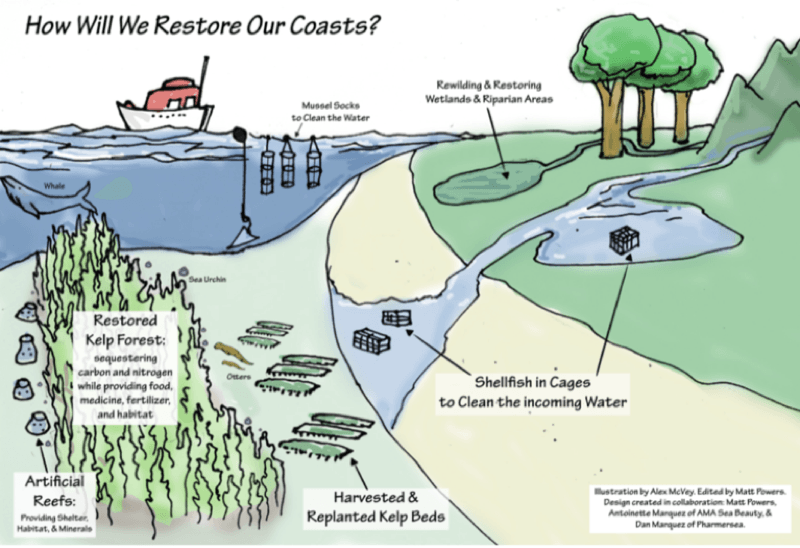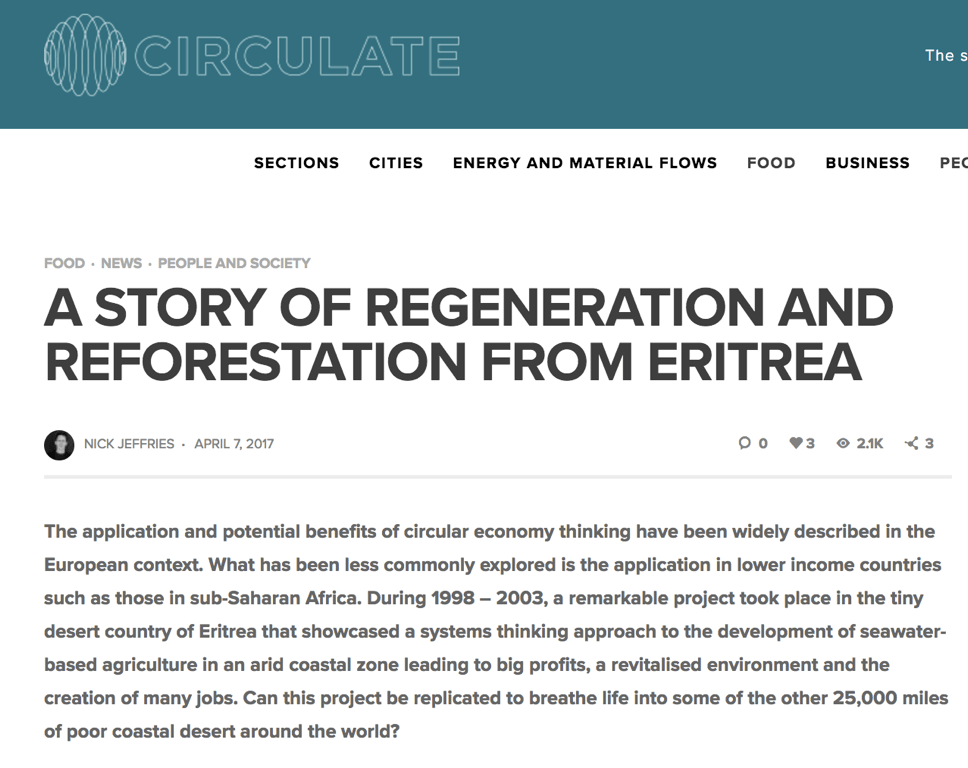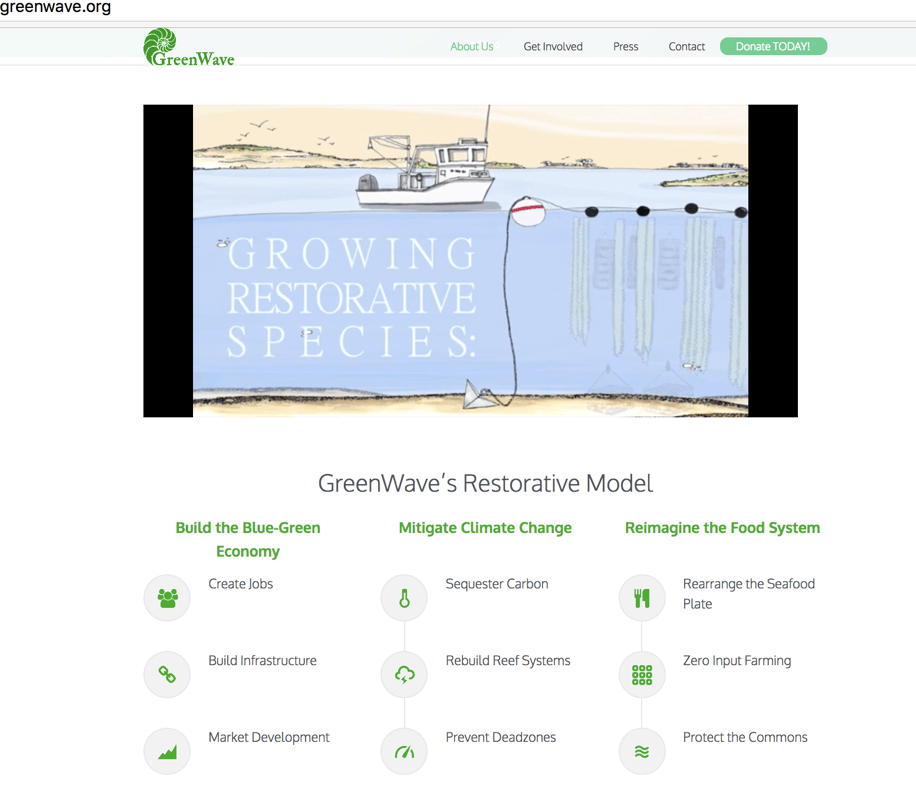Blue Economy
Regenerative Blue Economy Growth Models:
The term the Blue Economy is used for both an economy based on ocean related activities and an approach to a green economy that is based on innovation and cascading resources for greater benefit than single use, including the elimination of waste and pollution. It’s actually essential to apply the latter to ocean related economic activities, based on the current depleted state of our ocean and estuary ecosystems, and hence their capacity as a resource.
This three-year project 2016-2019 was sponsored by the Water Research Commission. The results of this project include:
Sustainable Economic Models: The key contribution of this project is the development of a bespoke Cost/Benefit Analysis (CBA) economic modelling tool as a way of assessing the wider human benefit of oceans economy development scenarios – one that factors in ecological, social and long-term impacts, rather than only short-term benefits that focus on GDP alone. The economic modelling tool was developed as a generic tool, tested for a potential project in the Knysna Estuary, and further tested using the proposed uThukela Banks MPA as case study. The essential focus of the economic modelling processes is to compare restorative model scenarios with business-as-usual linear economy scenarios, and to calculate relative socio-economic and environmental benefits from an economic perspective. The purpose is to inform decision makers of the implications of different development decisions. Initial results indicate that regenerative models have significantly greater benefits (3-6 times greater for human benefit in some cases) compared to business-as-usual options. The model shows that by investing in a more circular economy, there are substantial positive gains to be made.


Proven and Operational SMMEs (sustainable Blue Economy Business Models).
It was outside of the scope of the project to incubate new businesses, and therefore existing local and international proven and operational SMMEs were documented as best practice examples that can contribute to a regenerative and inclusive blue economy. Many proven and operational ones were documented as well as a number of other new potential ones, illustrating broad opportunities worth investment as part of any national blue economy strategy. Locations included: Hout Bay, Saldanha Bay, Knysna Bay, East London, the Wild Coast, and the KZN coast including Durban Bay. Replicating and scaling these models could be a significant contribution to the Blue Economy nationally, by generating economic benefits and employment while regenerating ecosystem integrity, in particular for estuaries affected by water quality.
Integrate best practice into South African Blue Economy Strategy and related legislation:
The project team originally intended to work with government to integrate project findings within a National Blue Economy strategy, but it turns out there is no National Blue Economy Strategy beyond Operations Phakisa. In addition, despite many attempts to engage with government there was insufficient interest to engage with this project.
It was realised that civil society has a greater capacity and interest in integrating these projects findings within their national strategies and so the focus shifted to enabling WildTrust and WildOceans to expand and integrate these Blue Economy initiatives within their national strategies.
The key elements of the integration into WildTrust’s national strategy for a Blue Economy include:
- Expanding the existing WildLands Green Economy programmes for ecosystem restoration and enterprise development to WildOceans Blue Economy initiatives and integrating some of the innovative Blue Economy SMME business models identified in this WRC project;
- Building on the success of the existing WildOceans Blew Crew and Blue port projects in KZN and Durban Bay as a model for circular economy initiatives (collecting and up-cycling solid waste through active and passive interventions that also monitor and map waste data); Water quality treatment interventions through engineered ecological infrastructure where feasible;
- Ecosystem restoration within the estuary and upstream through the ‘adopt-a-river’ programme (including both alien clearing and projects such as mangrove restoration); Inclusive economic models benefiting marginalised coastal communities, funded through partnerships between government and private sector, as well as larger donor funding organisations (such as IUCN);
- Integration of these projects within government strategy and policy through Estuary Management Plans;
- Scaling and replicating this project’s Economic Model and Framework in other estuaries especially focusing on those most affected by water quality, and where existing initiatives can be built upon, incl: Richards Bay, Knysna estuary, Hout Bay, Saldanha Bay, Swartkops, Sundays, Umhlatuzi, Umhlanga, Umkomazi, and others in a phased approach.
Develop a model or guiding framework on how coastal ecosystems can support the blue economy that benefits local and broader communities:
This component aimed to develop a model and guiding framework on how coastal ecosystems can support the blue economy that benefits local and broader communities. The guiding framework is an integration of key relevant global guiding frameworks including: Doughnut Economics, The Circular Economy, Distributed Economies, Regenerative Design, Resilience and The Blue Economy, which put forward the need for regenerative, circular and distributed economies that enable both thriving communities and ecosystems. Rather than wait for growth to clean up the environment and reduce inequalities– because history proves it won’t – it is far smarter to create economic models that are, by design: economically inclusive and regenerative for ecosystems. Africa needs to define its own understanding of prosperity and progress, while promoting innovative thinking and practices that will enhance human and ecological well-being. Regenerative economic development embraces biosphere stewardship and recognises that we have a responsibility to leave the living world in a better state than we found it. It calls for creating enterprises whose core business helps to regenerate and distribute wealth, leveraging networks. Industrial manufacturing has begun the metamorphosis from degenerative to regenerative design through what has come to be known as the Circular Economy. It represents a systemic shift that builds long-term resilience, generates business and economic opportunities, and provides environmental and societal benefits. In a circular economy, economic activity builds and rebuilds overall system health. The concept of distributed economies calls for a transformation in the industrial and infrastructure systems towards distributed economies departing from the socio-economically and environmentally unsustainable dynamics associated with large-scale, centralised production units that are favoured by 20th century economic drivers. With distributed economies, a selective share of production is distributed to regions where a diverse range of activities are organised in the form of small-scale, flexible units that are synergistically connected or networked with each other to achieve scale and mutually beneficial relationships. This project’s framework is a model for how to take the conceptual thinking behind 21st Century Economics (Kate Raworth) and apply it at a local level - in this case within the oceans economy.
clean technology
Never before has the health of the oceans been more fragile, and more essential to our wellbeing. Imagine a Blue Economy that actually helps bring the ocean back to health, by fitting within the boundaries of the ocean’s ecosystems, accelerating the adoption of clean technologies and renewable energy, and creating circular material flows. Imagine that this process creates new jobs and economic opportunities.
— WWF
shaping responses
Economics is the mother tongue of public policy. It dominates our decision-making for the future, guides multi-billion-dollar investments, and shapes our responses to climate change, inequality, and other environmental and social challenges that define our times. Pity then, or more like disaster, that its fundamental ideas are centuries out of date yet are still taught in college courses worldwide and still used to address critical issues in government and business alike.
— Kate Raworth, 21st Century Economics




